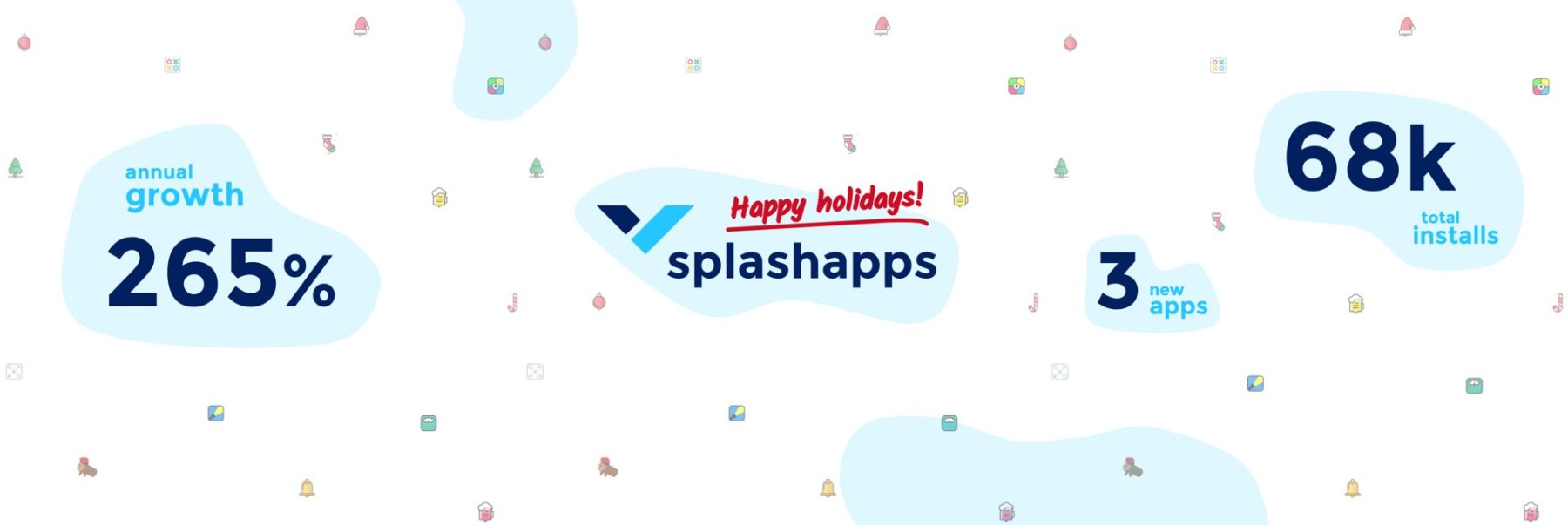2019 review, a year of effort and success
2019 review, a year of effort and success
by Pol Villaverde / splashapps / 22-12-2019
Doing a year review when December is almost over isn’t something specially original. But that doesn’t mean we are not going to do it because it is in fact a useful way of gaining perspective and seeing how things have gone. What’s more, doing reviewing one’s year is a basic step to think about the future, adjust the goals and find sense to what we do. So hereby we’ve condensed 2019 for splashapps.
It’s been a long path until the results we are presenting, would you like to read our story? Find out more.
How things began
The first months of the year were influenced by a peak in our Kuku Kube game installs. Also during the first half of the year, we faced the task of updating the design of several apps, which needed to be renewed. The new and attractive esthetics of Kuku Kube and Tic Tac Toe Colors caused an increase in the amount of downloads. Later on, at the beginning of summer, we published a new app at Google Play and named it SimpleTorch. It consists of an emergency flashlight that activates the phone’s flash and can emit the SOS morse code.
It was during summer when great novelties arrived, which would have a big impact on the company. Firstly, we took the decision to build a new website and buy a domain, splash-apps.com Similarly, we opened some more professional specific e-mails using the new domain. One of the most important novelties for the website was the Blog section, where we post articles on all sorts of different topics because we do make apps, but that doesn’t mean we aren’t still interested in the rest of the world, right? We’ve talked about 3D printing, about tricks to administrate an Instagram profile, about the necessary steps to open a business and many other things. The new website came along a change in our brand image: more attractive, modern and solid than the former. Despite the changes, white and blue remain to be our characteristic colors.

This year’s big hit
However, all those changes where nothing compared to the achievement of a great milestone, the collaboration with a popular Instagram meme account, @Unidestroyer. With that project, we worked on the creation of the definitive “Never have I ever” classic party game. In addition, we developed and designed and developed a paid version, our first app available on the App Store for iOS devices. The process was long and implied many hours of work but we finally published both apps on September 4th 2019. It was an absolute success. In a few minutes, the website server collapsed and we appeared at the top grossing rankings both at Google Play and the App Store. Thousands of users received very positively the app and rated it with 5 stars, helping us to reach number 1 in the top sales ranking for Spain. Number 1 in Spain and top 10 in many European countries and the world.
Got an app idea? At splashapps we can turn your idea into a reality. Tell us about it and we’ll make it happen!
Since then, our activity has been centered in the preparation of app updates but the effort has been worth it, it can already be said that our app is a usual colleague for parties! Several popular Instagram Catalan instagramers mentioned the app in their stories and contributed with their own content to the app, which already has 3 unique game modes and +450 epic sentences to have fun.
Present stats and future goals
Finally, during November and December, the downloads of our first app, Tic Tac Toe Colors, skyrocketed with hundreds of daily new users. When compared to 2018, app installs have increased by 265%, due to an especially good last quarter. We’ve reached more than 67.000 installs!
As of our goals for 2020, we want to consolidate our “Never have I ever” app in Catalan as a reference in Catalonia and keep gaining new users. Also, we hope to replicate this successful model translating the app to other languages to keep growing. We have another motivating app project in mind, a capital cities quiz. Our objective is to make it as complete as possible to be able to use the structure of it to create thematic apps in very diverse fields. Lastly, we want to keep feeding our Blog with more articles like this one about very diverse and interesting topics. Let’s wrap up, then, with our best wishes for 2020 and this new decade!
It’s been a long path until the results we are presenting, would you like to read our story? Find out more.
Hungry for more?
You’ve finished this article on “2019 review, a year of effort and success” and we hope you’ve liked it. What’s next?
Read our story
Once upon a time a young student learned how to code at school. He was fascinated by the possibility to create apps himself and since then, splashapps has grown until becoming not a child’s dream but a reality.
Got an app idea?
At splashapps we can turn your idea into a reality and we build useful apps and fun games. Tell us your idea and we’ll try to make it happen toghether!
Get in touch
- info@splash-apps.com
- feedback@splash-apps.com
- idea@splash-apps.com
- Instagram DM
- Twitter DM
© Copyright 2019 splashapps
2019 review, a year of effort and success Read More »





